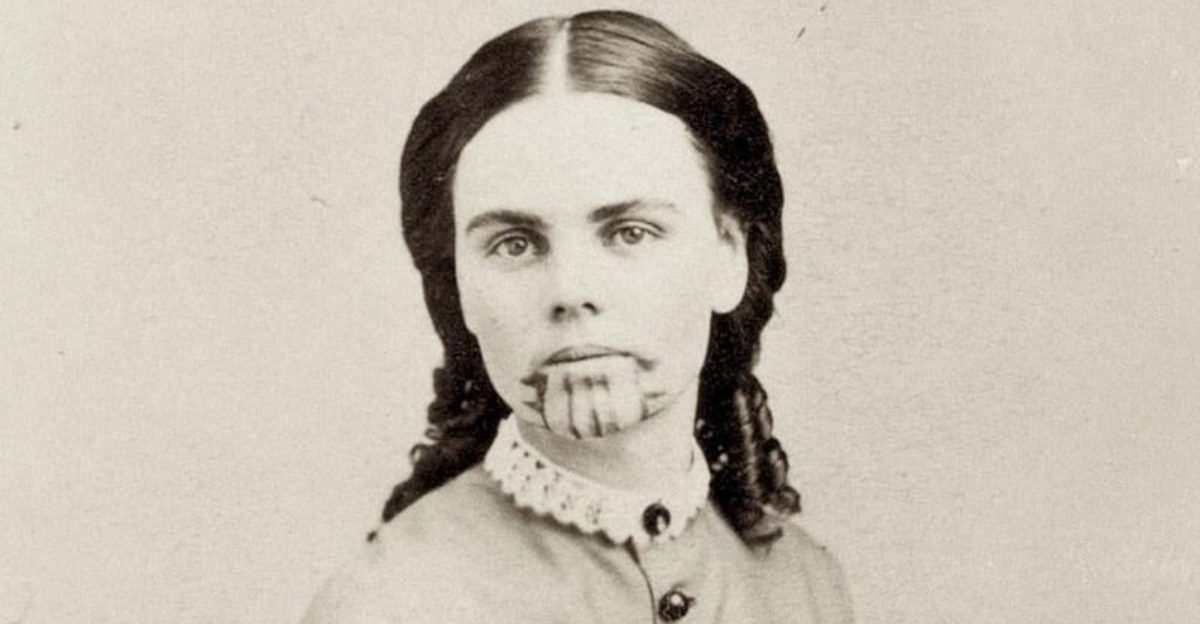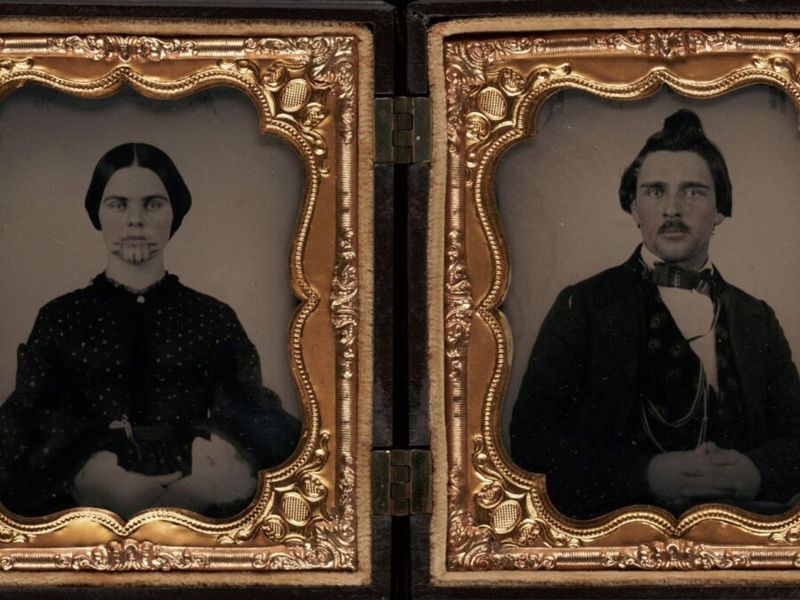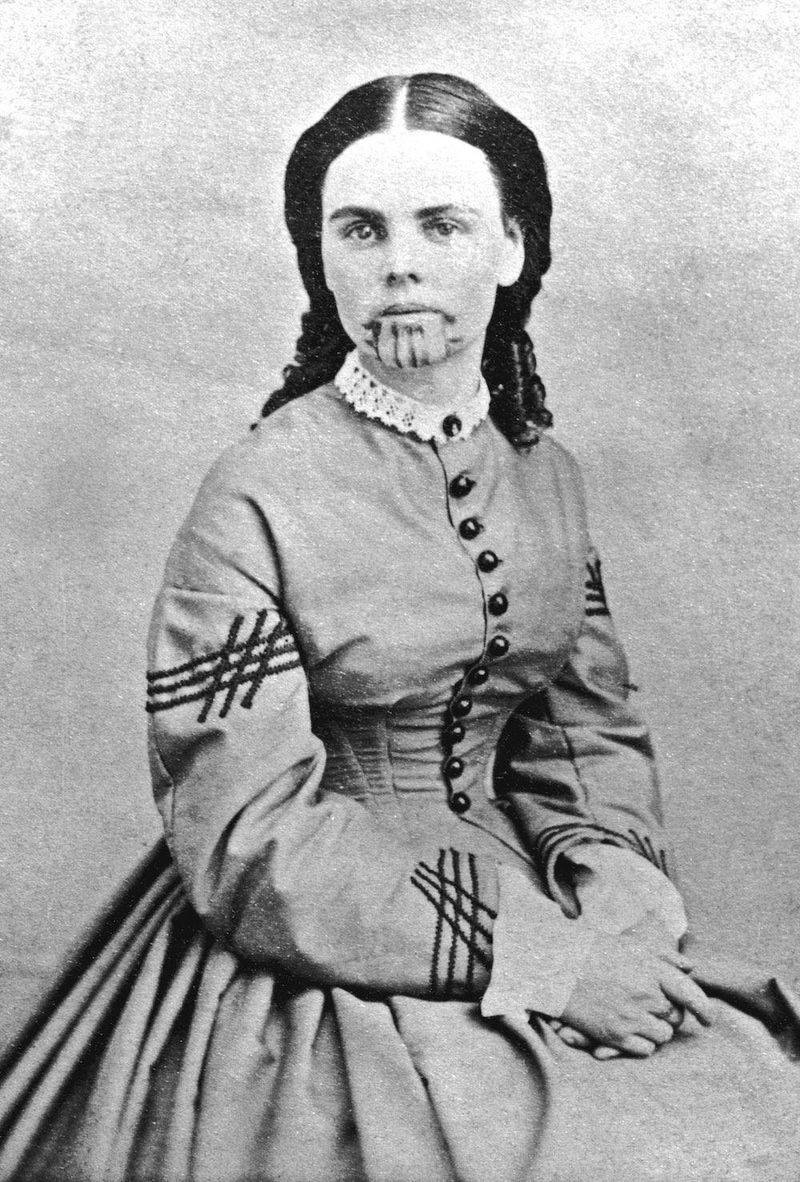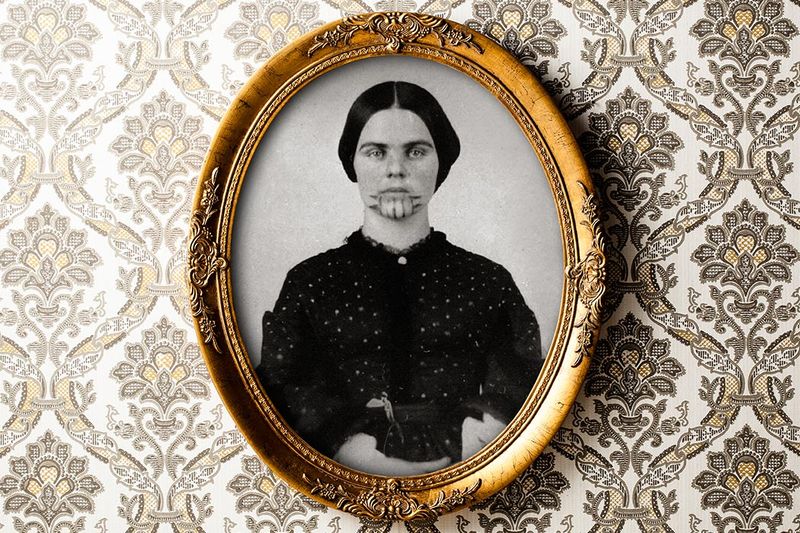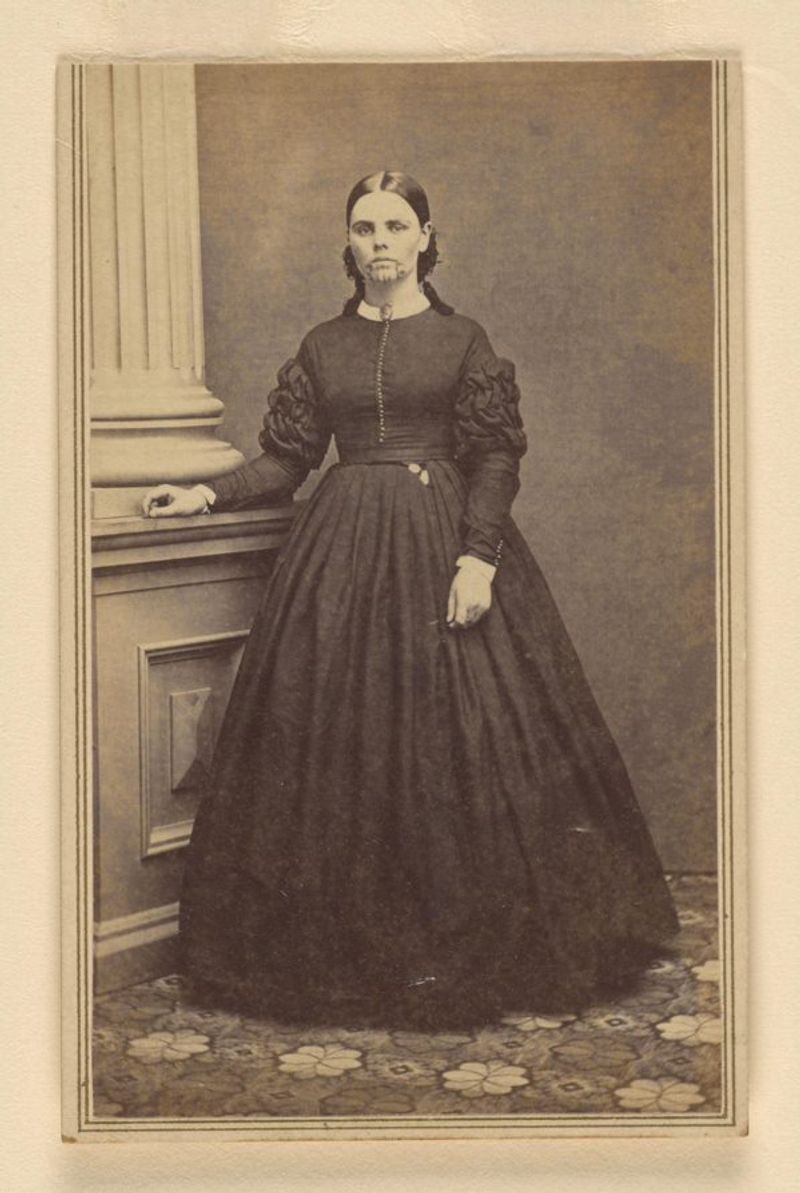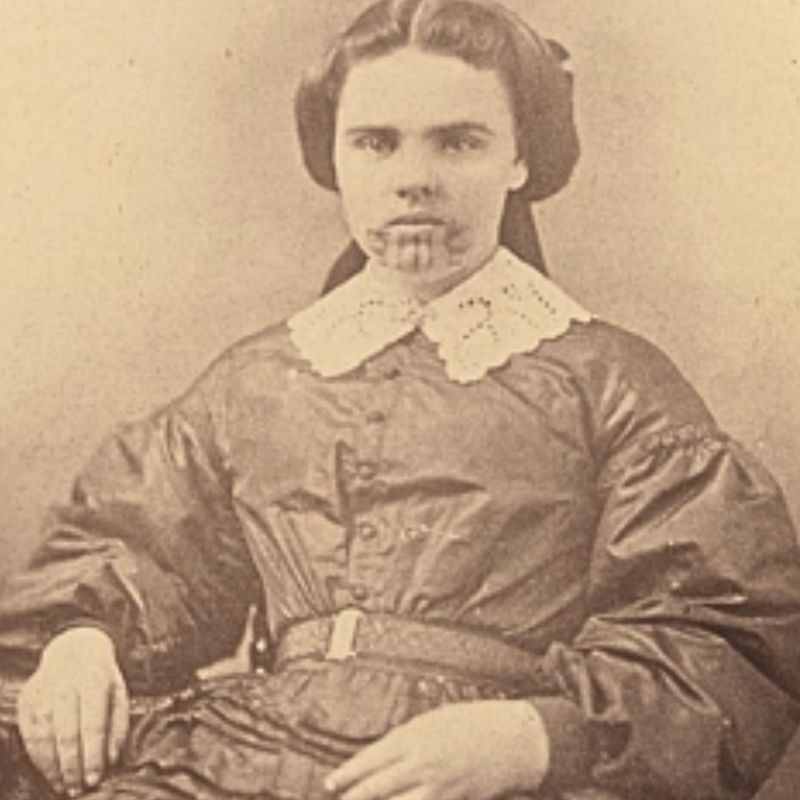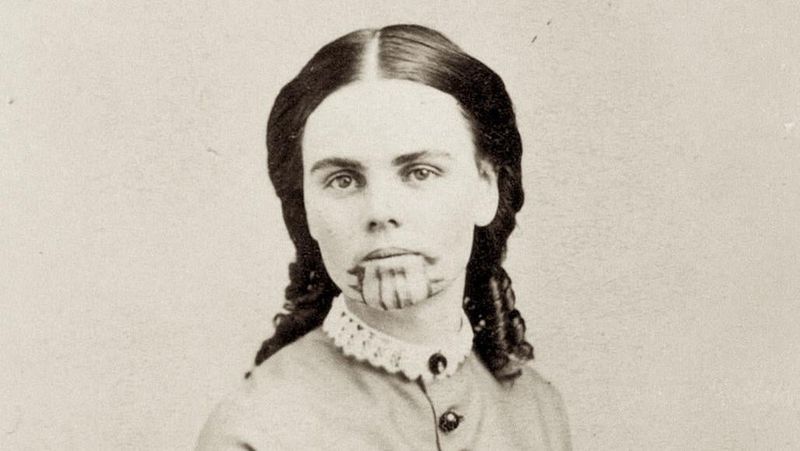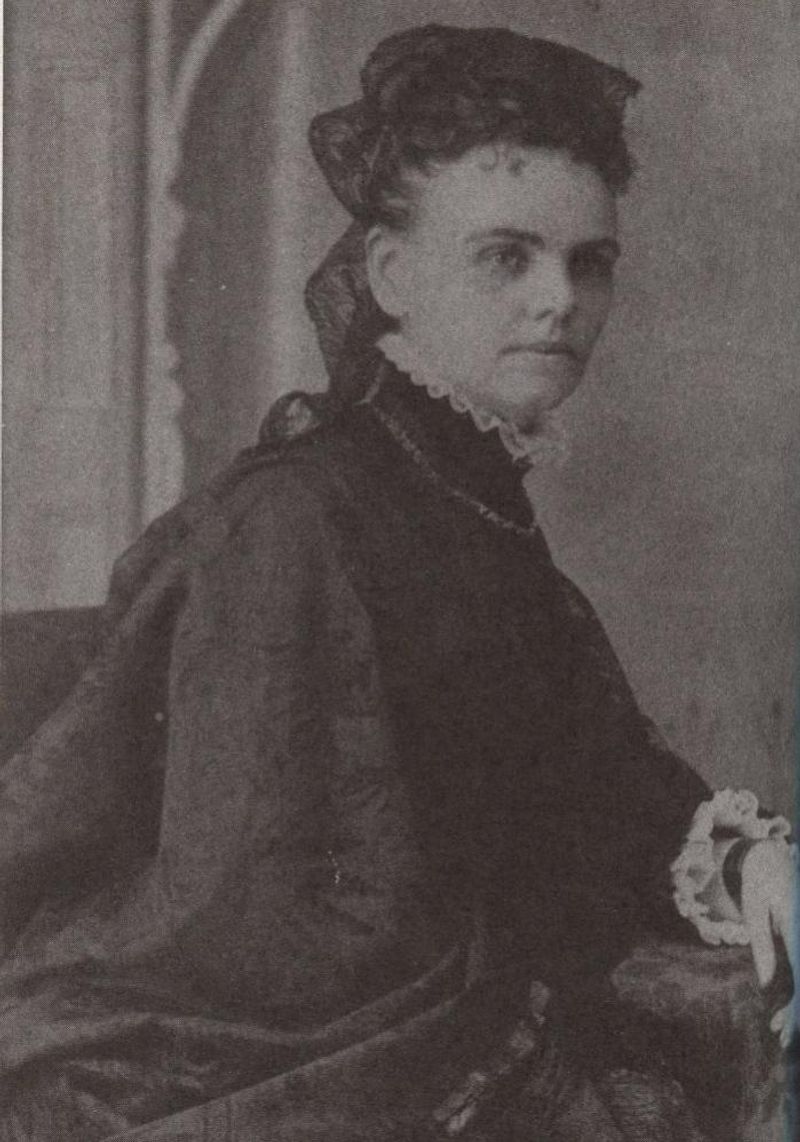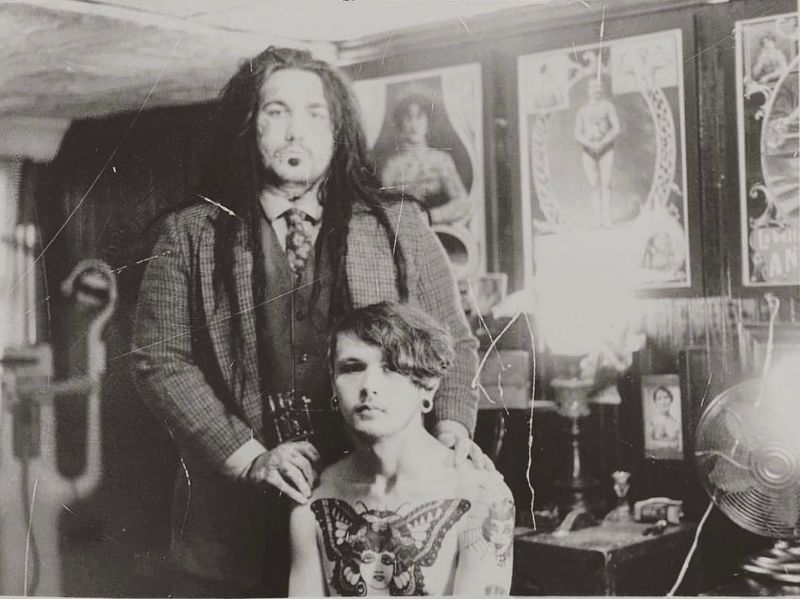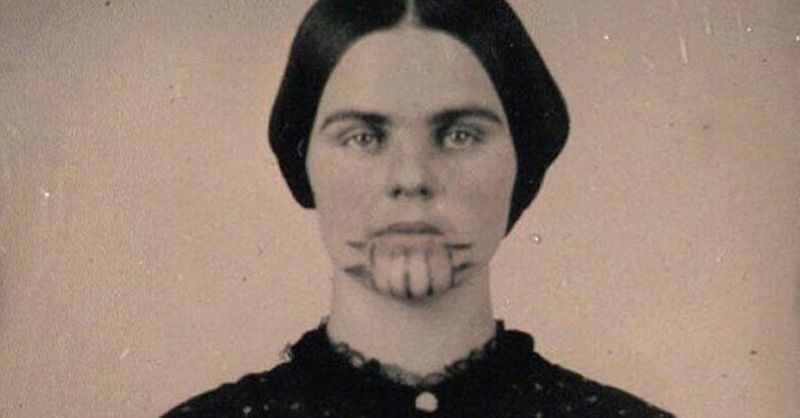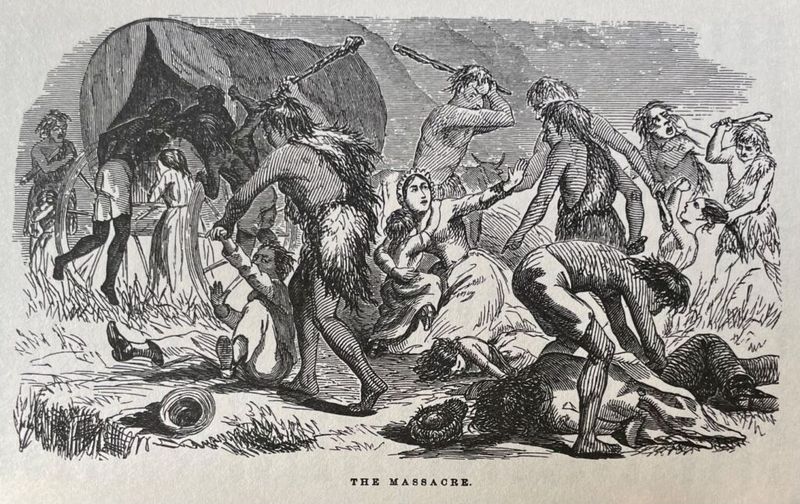Explore the compelling life of Olive Oatman, a woman marked by tragedy and resilience, whose unique story continues to captivate historians and readers alike. From the harrowing massacre of her family to her unexpected integration into the Mojave tribe, Olive’s journey is one of survival, adaptation, and enigmatic identity. Her famous chin tattoo, a symbol of belonging and mystery, serves as a lasting testament to her extraordinary experiences. This blog post delves into ten pivotal moments in Olive’s life, each revealing a different facet of her complex narrative. Join us as we uncover the fascinating story behind the girl with the Mojave tattoo.
1. Her Family Was Massacred by the Yavapai
Olive Oatman’s world turned upside down in 1851 when her family, traveling as Mormon pioneers, was brutally attacked by a Yavapai raiding party in Arizona. At just 14, Olive and her 7-year-old sister Mary Ann were the sole survivors, enslaved by the tribe, while the rest of their family perished in the massacre.
This traumatic event marked the beginning of an extraordinary journey for Olive, one defined by resilience and the will to survive in the face of unimaginable loss. Her story continues to resonate, shedding light on the complexities of frontier life and cultural encounters.
2. She Was Later Traded to the Mojave Tribe
After enduring a year of harsh treatment by the Yavapai, Olive and her sister were traded to the Mojave tribe. The exchange, involving horses and vegetables, marked a turning point in Olive’s life. Unlike their previous captors, the Mojave embraced the sisters, integrating them into their community with compassion and acceptance.
Olive’s time with the Mojave was a period of adaptation, where she learned new customs and ways of life. This chapter in her life reveals the transformative power of kindness and highlights the cultural richness of the Mojave people who welcomed her as one of their own.
3. The Meaning of Her Famous Tattoo
One of the most captivating aspects of Olive’s story is her chin tattoo, a series of blue lines applied by the Mojave. This tattoo marked her as a member of the tribe, a visual testament to her adopted cultural identity. The ink symbolized more than just belonging; it was believed by some historians to ensure her passage to the afterlife if she were to die.
The tattoo’s significance lies not only in its cultural context but also in how it shaped Olive’s identity in the eyes of both the Mojave and the white society she would later rejoin.
4. Her Sister Died of Starvation
Amidst a severe famine, Olive faced the heartbreak of losing her sister Mary Ann to starvation. Despite the Mojave’s efforts to provide for them, resources were scarce. Olive, however, survived, possibly due to the Mojave prioritizing her nourishment.
This poignant moment underscored the harsh realities of life on the frontier and the unpredictable challenges faced by indigenous communities. Olive’s survival, against such odds, speaks to her inner strength and the complex dynamics of her relationship with the Mojave who, despite the tragedy, treated her with kindness and respect.
5. She Was “Rescued” Against Her Will
In 1856, Olive was “rescued” by a messenger from Fort Yuma, who demanded her return to white society. Interestingly, some accounts suggest Olive was reluctant to leave the Mojave, having adapted to their way of life. Her resistance to leaving speaks volumes about her complex identity and the life she had grown accustomed to.
This episode raises questions about the nature of rescue, identity, and belonging, as Olive was torn between two worlds. Her return was not just a physical journey but an emotional one, filled with conflicting loyalties and unresolved ties.
6. Her Story Was Sensationalized
Olive’s story captured public imagination and was sensationalized by Minister Royal B. Stratton, who penned a bestselling book about her experiences. The narrative was often exaggerated, presenting Olive as a damsel in distress rather than the complex, resilient individual she was.
Olive embarked on a lecture tour to share her story, yet her speeches frequently contradicted the book’s more dramatic claims. The sensationalism surrounding her life highlights the era’s fascination with “captivity narratives,” and how Olive’s true experiences were manipulated for entertainment and profit.
7. She Married a Man Who May Have Stalked Her
Olive’s life took another unexpected turn when she married John Fairchild, a man rumored to have been fascinated by her story before they met. This intriguing aspect of her life hints at the complexities of her relationships and how her past continued to influence her future.
Together, they adopted a daughter and lived a reclusive life, possibly as a protective measure against the public scrutiny that followed Olive due to her unique history. Her marriage to Fairchild opens windows into the personal challenges she faced, balancing her public persona with private realities.
8. She Rarely Spoke About Her Mojave Family
Despite her years with the Mojave, Olive rarely spoke about them after rejoining white society. Though she visited the tribe later in life, she never rekindled deep connections, possibly due to a sense of divided identity or unresolved emotions.
This silence speaks to the complex nature of her experience, caught between two cultures. It raises questions about identity, belonging, and the emotional toll of her journey. Olive’s reluctance to discuss her Mojave family highlights the personal struggles she faced in reconciling her past with her present.
9. Her Tattoo Made Her a Reluctant Celebrity
Olive’s chin tattoo, a symbol of her time with the Mojave, became a defining feature that drew public attention. She became a reluctant celebrity, with whispers of her being “tainted” by her time among the “savages.” This notoriety was a double-edged sword, bringing both fascination and stigma.
In later photographs, Olive often concealed her tattoo with lace, suggesting her discomfort with the unwanted attention. Her story illustrates the societal challenges she faced in navigating her identity and the perceptions others imposed on her due to her distinctive mark.
10. Her Legacy Is Still Debated
Olive Oatman’s legacy is a subject of ongoing debate among historians and scholars. Was she a victim of her circumstances, a survivor who adapted to her environment, or someone who found a sense of belonging outside her original culture? These questions continue to intrigue and provoke discussion.
Modern scholars reexamine her life to uncover the truths behind her experiences, questioning whether she was truly “rescued” or forced to abandon a life she had come to accept. Her legacy, rich with complexity, remains a topic of fascination and scholarly exploration.
